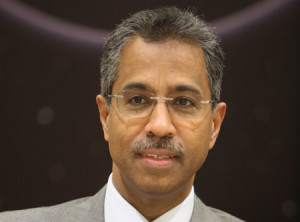Inmarsat and Hellas-sat have signed an agreement to launch a joint satellite into 39deg E orbital location. The satellite will carry two missions; first, the S-band payload (designated EuropaSat), which represents Inmarsats commitment to deploy an integrated telecommunications network to deliver aviation passenger connectivity services on a EU-wide basis and, second, a 44 Ku-band transponders […]

Inmarsat and Hellas-sat have signed an agreement to launch a joint satellite into 39deg E orbital location. The satellite will carry two missions; first, the S-band payload (designated EuropaSat), which represents Inmarsats commitment to deploy an integrated telecommunications network to deliver aviation passenger connectivity services on a EU-wide basis and, second, a 44 Ku-band transponders payload designated Hellas-sat 3 for Hellas-sat, a majority owned subsidiary of Arabsat that will replace the existing Hellas-sat2 satellite and provide more growth capacities to its customers with diversified footprints in Europe, Middle East and Africa. The satellite will be manufactured by Thales Alenia Space and work will commence immediately to be launched in 2016.
Khalid Balkheyour, Arabsat President & CEO and Chairman of the Board of Directors of Hellas-sat, said: This agreement represents the first milestone in fulfilling our commitment to our shareholders to capture additional growth opportunities, especially after the acquisition of Hellas-sat. Hellas-sat-3 also represents our commitment to Hellas-sats existing and loyal customers and partners in maintaining and expanding their business and continue to establish 39deg E as one of the leading DTH hotspots in Europe. This is the first satellite contract among our announced four satellites programme. Negotiations with Inmarsat started last November and was just recently concluded. The flexible design of our programs bid in terms of process and selection criteria has allowed for this agreement to realise and to be carved out of the bid.
Rupert Pearce, Inmarsat CEO, said, North America has seen rapid take-up of in-flight passenger connectivity. The success of the GoGo air-to-ground network has already triggered the building of a second competing network by AT&T, one of the worlds largest telecommunications operators. Independent research predicts that in-flight connectivity services will be a multi-billion dollar revenue sector by 2020. Inmarsats initiative announced today represents a major new business opportunity that is expected to deliver incremental profitable growth in the years to come and to deliver a strong return on investment.
Both Inmarsat and Arabsat agree that this joint satellite agreement will reduce significantly both parties costs over the three years of the project .
Christodoulos Protopapas, CEO of Hellas-sat has further commented Hellas Sat will continue to develop the location 39degE to be the leading DTH hotspot in Europe, Hellas-sat 3 will cater for additional capacities and services for HD and free to air channels and will guarantee additional room for our existing customer base to grow. Hellas-sat will leverage 39deg E by adding another satellite; Hellas-sat 4 with wide coverage and intensive Ku- beams over Europe, Middle East and Africa for different types of broadcasting and telecommunication services, in addition to a multi spot Ka-beams payload for broadband and business networks. The constellation of both Hs-3 and Hs-4 will provide extensive redundancy and backup capacities to further secure DTH networks and customer base and guarantee the sustainability of the business and provide competitive advantage to its customers in Europe and other areas. Hs-4 is currently included in the 4 satellite programmes bid earlier announced by Arabsat.
Both Rupert Pearce and Khalid Balkheyour concluded that through their shared payload partnership the two companies will significantly minimise both risk and financial cost of their investment plans on a project with high potential returns. By spreading the cost of the investment over a period of several years they could manage the cost of the project while still creating value for shareholders from their existing operations and infrastructure.
















































































